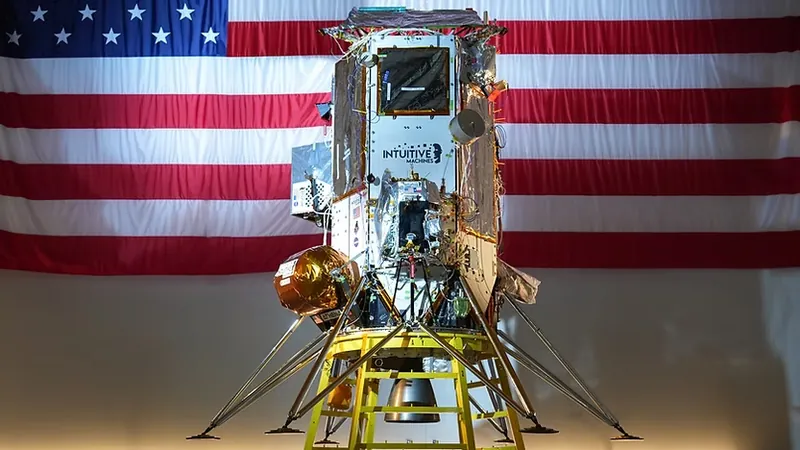
Intuitive Machines' IM-2 Lunar Lander's Bumpy Ride: What Went Wrong?
2025-05-14
Author: Wei Ling
A Troubled Landing on the Moon's South Pole
Intuitive Machines' second lunar lander, IM-2, faced a rocky landing at the Moon's South Pole, tipping over due to altimeter interference and challenging lighting conditions. Company president and CEO, Steve Altemus, addressed these issues during a recent earnings call, assuring investors that the next mission, IM-3, will be a smoother operation.
A Shift in Lunar Exploration
As part of NASA's Commercial Lunar Payload Services (CLPS) initiative, Intuitive Machines is one of the pioneering companies providing crucial lunar lander services. Instead of constructing landers themselves, NASA collaborates with private enterprises like IM, expecting these companies to serve other commercial clients to sustain their operations.
Lessons Learned from the First Landing Attempts
Intuitive Machines' first attempt, the IM-1 lander, also stumbled in February 2024 when a faulty laser altimeter caused it to tip over upon touchdown. However, some payloads functioned successfully for days, prompting both IM and NASA to deem it a partial success. Expectations soared for IM-2, which was launched on February 26, 2025, but unfortunately, it also landed on its side—this time only operating for about 12 hours due to inefficient solar panel exposure.
Navigating Challenges at the South Pole
Despite its challenges, IM-2 made history by landing closer to the Moon's South Pole than any previous spacecraft. This region, characterized by harsh terrain and peculiar lighting conditions, is crucial for ongoing scientific studies, particularly regarding the possibility of water in permanently shadowed areas. NASA aims to deploy astronauts there by 2027 as part of its Artemis program, with long-term plans to utilize lunar water for human missions.
Analyzing the Factors Behind IM-2's Issues
During the earnings call, Altemus highlighted three main factors leading to IM-2's imperfect landing. The signal noise that disrupted the laser altimeter was one issue, but the treacherous terrain posed significant challenges as well. Long shadows and low-angle sunlight hindered the landing precision, while imagery from NASA’s Lunar Reconnaissance Orbiter failed to accurately depict craters from lower altitudes in those conditions.
Future Improvements for IM-3
Identifying these challenges, the team is making substantial changes for IM-3, including introducing more robust altimeters, a innovative lighting-independent sensor for surface velocity, and a more extensive onboard crater database. Altemus mentioned that while these enhancements may lead to a slight increase in costs, they expect an unaffected schedule.
What's Next for Intuitive Machines?
While IM-3 is set to explore Reiner Gamma—a unique lunar feature near the equator—plans for a fourth mission, IM-4, are already underway, targeting a return to the South Pole. NASA’s commitment to support these innovative lunar missions underscores the significant role of commercial partnerships in advancing lunar exploration.



 Brasil (PT)
Brasil (PT)
 Canada (EN)
Canada (EN)
 Chile (ES)
Chile (ES)
 Česko (CS)
Česko (CS)
 대한민국 (KO)
대한민국 (KO)
 España (ES)
España (ES)
 France (FR)
France (FR)
 Hong Kong (EN)
Hong Kong (EN)
 Italia (IT)
Italia (IT)
 日本 (JA)
日本 (JA)
 Magyarország (HU)
Magyarország (HU)
 Norge (NO)
Norge (NO)
 Polska (PL)
Polska (PL)
 Schweiz (DE)
Schweiz (DE)
 Singapore (EN)
Singapore (EN)
 Sverige (SV)
Sverige (SV)
 Suomi (FI)
Suomi (FI)
 Türkiye (TR)
Türkiye (TR)
 الإمارات العربية المتحدة (AR)
الإمارات العربية المتحدة (AR)